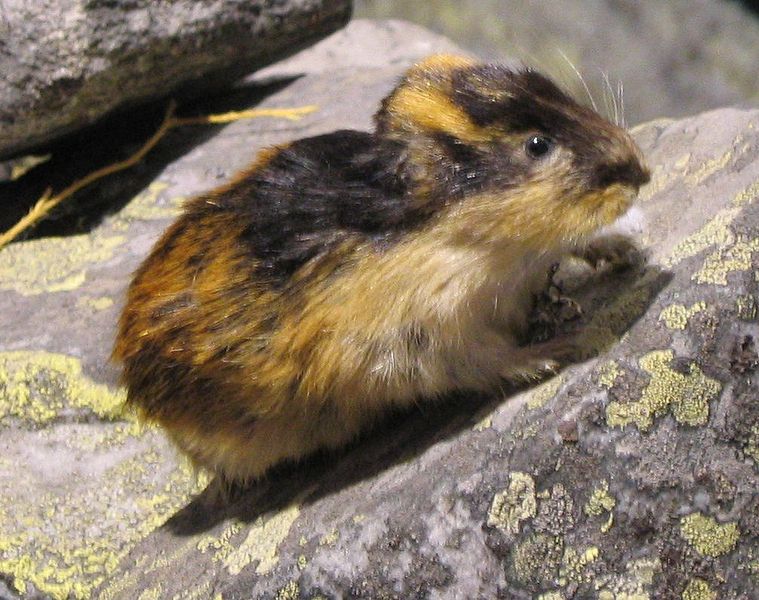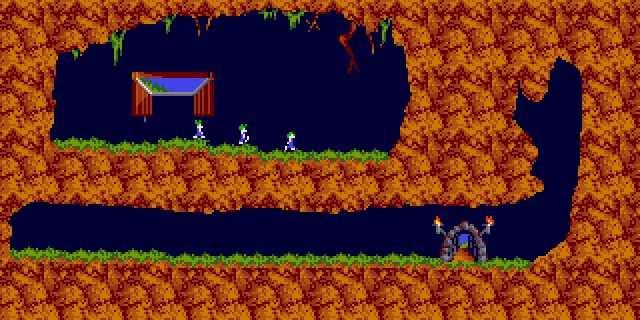Team:ETHZ Basel/Introduction/Motivation
From 2010.igem.org
(→Why E. lemming?) |
|||
| (34 intermediate revisions not shown) | |||
| Line 2: | Line 2: | ||
{{ETHZ_Basel10_Introduction}} | {{ETHZ_Basel10_Introduction}} | ||
| - | = Why E.lemming? = | + | = Why E. lemming? = |
[[Image:ETH_igem_lemming.jpg|thumb|250px|The Norwegian Lemming (''Lemmus lemmus'')]] | [[Image:ETH_igem_lemming.jpg|thumb|250px|The Norwegian Lemming (''Lemmus lemmus'')]] | ||
| - | Lemmings are | + | Lemmings are cute, tiny rodents, leading a happy and fulfilling life in the cold Arctic regions [[Team:ETHZ_Basel/Introduction/Motivation#References|[1]]]. Life is good and easy! So, the lemmings reproduce and their population keeps increasing, until it becomes unfeasibly large. This increase in population is followed by a sudden dramatic decrease, for which no biological explanation has so far been provided [[Team:ETHZ_Basel/Introduction/Motivation#References|[2]]]. However, the mythical explanation exists and it says that, from time to time, the lemmings suffer a panic attack, pushing them to what is legendary known as 'the mass suicide' of the lemmings [[Team:ETHZ_Basel/Introduction/Motivation#References|[3]]]. According to the legend, during these difficult periods, lemmings can be seen chaotically swimming in the turbulent, cold and dangerous Norwegian rivers and, most of the times, they won't make it to the other shore. |
| - | + | ||
| - | + | ||
| - | + | ||
| - | + | ||
| - | + | ||
| - | + | ||
| - | + | ||
| + | This legend has been propagated mainly through one of the most popular computer games of all times: 'Lemmings' [[Team:ETHZ_Basel/Introduction/Motivation#References|[4]]], in which the player has to control virtual lemmings and lead them to a predefined exit, while traveling on challenging routes. The goal of the game is to save as many lemmings as possible and prevent them from committing mass suicide. Inspired by the concept behind the 'Lemmings' game, we used genetically modified ''E. coli'' cells to design our own controllable bacterium, which we hence named '''E. lemming'''. | ||
= Project Idea = | = Project Idea = | ||
| - | [[Image: | + | [[Image:ETH_igem_lemmings_screen.PNG|thumb|250px|Screenshot from the game Lemmings]] |
| - | We control the movement of a single E. coli cell by light. In wild type E. coli flagella movement is controlled by proteins of the chemotaxis pathway, so called Che proteins. In our engineered cells one of these Che proteins is fused to a synthetic light-sensitive localization system. Two external inputs - red light and far red light - induce the relocation of the fused proteins, thus reversibly changing | + | We control the movement of a single ''E. coli'' cell by light. In wild type ''E. coli'', flagella movement is controlled by proteins of the chemotaxis pathway, the so called Che proteins. In our engineered cells, one of these Che proteins is fused to a synthetic light-sensitive localization system. Two external inputs - red light and far-red light - induce the relocation of the fused proteins, thus reversibly changing flagellar movement direction. Cells, imaged by bright field microscopy, are automatically detected and tracked, while a closed loop controller guides the cell into a user defined direction by autonomously sending light inputs. This makes our engineered cell '''the smallest remotely controllable living robot on earth!'''. |
| - | + | ||
| - | + | ||
= References = | = References = | ||
Latest revision as of 01:17, 28 October 2010
Why E. lemming?
Lemmings are cute, tiny rodents, leading a happy and fulfilling life in the cold Arctic regions [1]. Life is good and easy! So, the lemmings reproduce and their population keeps increasing, until it becomes unfeasibly large. This increase in population is followed by a sudden dramatic decrease, for which no biological explanation has so far been provided [2]. However, the mythical explanation exists and it says that, from time to time, the lemmings suffer a panic attack, pushing them to what is legendary known as 'the mass suicide' of the lemmings [3]. According to the legend, during these difficult periods, lemmings can be seen chaotically swimming in the turbulent, cold and dangerous Norwegian rivers and, most of the times, they won't make it to the other shore.
This legend has been propagated mainly through one of the most popular computer games of all times: 'Lemmings' [4], in which the player has to control virtual lemmings and lead them to a predefined exit, while traveling on challenging routes. The goal of the game is to save as many lemmings as possible and prevent them from committing mass suicide. Inspired by the concept behind the 'Lemmings' game, we used genetically modified E. coli cells to design our own controllable bacterium, which we hence named E. lemming.
Project Idea
We control the movement of a single E. coli cell by light. In wild type E. coli, flagella movement is controlled by proteins of the chemotaxis pathway, the so called Che proteins. In our engineered cells, one of these Che proteins is fused to a synthetic light-sensitive localization system. Two external inputs - red light and far-red light - induce the relocation of the fused proteins, thus reversibly changing flagellar movement direction. Cells, imaged by bright field microscopy, are automatically detected and tracked, while a closed loop controller guides the cell into a user defined direction by autonomously sending light inputs. This makes our engineered cell the smallest remotely controllable living robot on earth!.
References
[1] [http://onlinelibrary.wiley.com/doi/10.1111/j.1439-0310.1995.tb00900.x/abstract Stenseth, N.C. & Ims, R.A. (eds.). 1993. The biology of lemmings. Academic Press, London]
[2] [http://findarticles.com/p/articles/mi_m2120/is_n5_v79/ai_20998373/ Boonstra, R., Krebs, C.J. & Stenseth, N.C. 1998. Population cycles in small mammals: the problem of explaining the low phase. Ecology 79, 1479-1488]
[3] [http://www.wildlifenews.alaska.gov/index.cfm?adfg=wildlife_news.view_article&issue_id=6&articles_id=56 Lemming Suicide Myth]
[4] [http://www.javalemmings.com/DMA/Lem_1.htm Lemmings Video Game ]
 "
"




